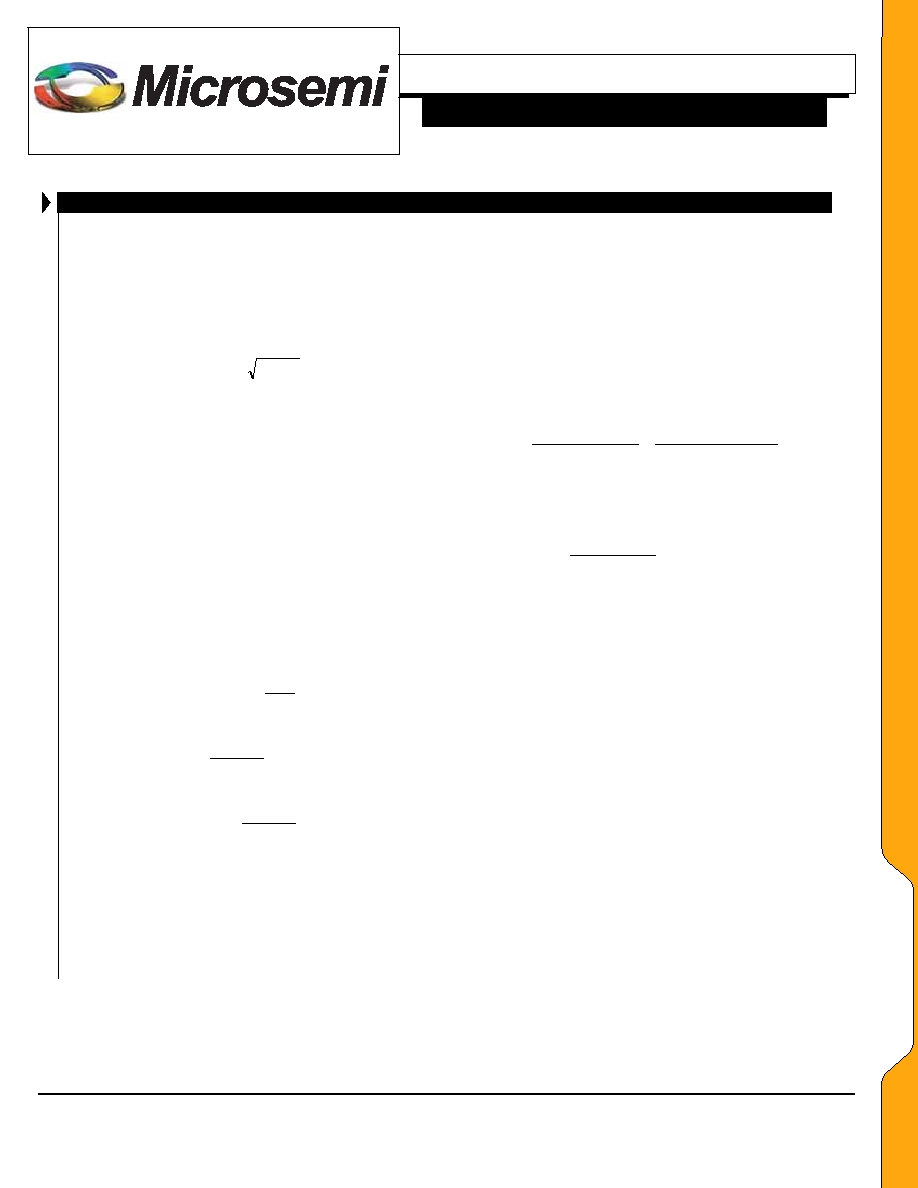- 您現(xiàn)在的位置:買(mǎi)賣(mài)IC網(wǎng) > PDF目錄45008 > LX1671CPW-TR (MICROSEMI CORP-ANALOG MIXED SIGNAL GROUP) 1 A SWITCHING CONTROLLER, 345 kHz SWITCHING FREQ-MAX, PDSO38 PDF資料下載
參數(shù)資料
| 型號(hào): | LX1671CPW-TR |
| 廠商: | MICROSEMI CORP-ANALOG MIXED SIGNAL GROUP |
| 元件分類(lèi): | 穩(wěn)壓器 |
| 英文描述: | 1 A SWITCHING CONTROLLER, 345 kHz SWITCHING FREQ-MAX, PDSO38 |
| 封裝: | ROHS COMPLIANT, PLASTIC, TSSOP-38 |
| 文件頁(yè)數(shù): | 9/21頁(yè) |
| 文件大小: | 419K |
| 代理商: | LX1671CPW-TR |
第1頁(yè)第2頁(yè)第3頁(yè)第4頁(yè)第5頁(yè)第6頁(yè)第7頁(yè)第8頁(yè)當(dāng)前第9頁(yè)第10頁(yè)第11頁(yè)第12頁(yè)第13頁(yè)第14頁(yè)第15頁(yè)第16頁(yè)第17頁(yè)第18頁(yè)第19頁(yè)第20頁(yè)第21頁(yè)

Microsemi
Integrated Products, Power Management
11861 Western Avenue, Garden Grove, CA. 92841, 714-898-8121, Fax: 714-893-2570
Page 17
Copyright
2000
Rev. 1.2b, 2006-02-13
WWW
.Microse
m
i
.CO
M
LX1671
Multiple Output LoadSHARE PWM
PRODUCTION DATA SHEET
TM
APPLICATION NOTE ( C ONTINU ED)
INPUT CAPACITOR
The input capacitor and the input inductor, if used, are to filter
the pulsating current generated by the buck converter to reduce
interference to other circuits connected to the same 5V rail. In
addition, the input capacitor provides local de-coupling for the
buck converter. The capacitor should be rated to handle the RMS
current requirements. The RMS current is:
d)
d(1
I
L
RMS
=
Where IL is the inductor current and d is the duty cycle. The
maximum value occurs when d = 50% then IRMS =0.5IL. For 5V
input and output in the range of 2 to 3V, the required RMS
current is very close to 0.5IL.
SOFT-START CAPACITOR
The value of the soft-start capacitor determines how fast the
output voltage rises and how large the inductor current is required
to charge the output capacitor. The output voltage will follow the
voltage at the SS pin if the required inductor current does not
exceed the maximum allowable current for the inductor. The SS
pin voltage can be expressed as:
(
)
SS
C
t/R
e
1
V
=
ref
Where RSS and CSS are the soft-start resistor and capacitor.
The current required to charge the output capacitor during the soft
start interval is.
dt
dVss
Cout
Iout
=
Taking the derivative with respect to time results in
SS
SS C
t/R
e
RssCss
VrefCout
Iout
=
and at t=0
RssCss
VrefCout
ax
Im
=
The required inductor current for the output capacitor to follow
the soft start voltage equals the required capacitor current plus the
load current.
The soft-start capacitor should be selected to
provide the desired power on sequencing and insure that the
overall inductor current does not exceed its maximum allowable
rating.
Values of Css equal to .1uf or greater are unlikely to result in
saturation of the output inductor unless very large output capacitors
are used.
OVER-CURRENT PROTECTION
Current limiting occurs at current level ICL when the voltage
detected by the current sense comparator is greater than the current
sense comparator threshold, VTRIP (300mV).
TRIP
SET
DS(ON)
CL
V
R
I
R
I
=
×
+
×
So,
A
50
R
I
mV
00
3
I
R
I
V
R
DS(ON)
CL
SET
DS(ON)
CL
TRIP
SET
×
=
×
=
Example:
For 10A current limit, using FDS6670A MOSFET (10m
Ω
RDS(ON)):
%
1
k
02
.
4
10
50
10
0.0
10
3
0.
R
6
SET
=
×
=
Note: Maximum RSET is 6KΩ. Any resistor 6KΩ or greater will
not allow startup since ICL will equal zero (50uA x 6KΩ=300mV).
At low duty cycles where the upper gate drive is less than 350nS
wide the 350nS delay for current limit enable may result in current
pulses exceeding the desired current limit set point. If the upper
MOSFET on time is less than 350nS and a short circuit condition
occurs the duty cycle will increase, since Vout will be low. The
current limit circuit will be enabled when the upper gate drive
exceeds 350nS although the actual peak current limit value will be
higher than calculated with the above equation.
Short circuit protection still exists due to the narrow pulse width
even though the magnitude of the current pulses will be higher than
the calculated value.
If OCP is not desired connect both VSX and VCX to VCC. Do not
leave them floating.
AA
PP
LL
IICC
AA
TT
IIOO
NN
相關(guān)PDF資料 |
PDF描述 |
|---|---|
| LX1672-05CPWTR | 1 A DUAL SWITCHING CONTROLLER, 575 kHz SWITCHING FREQ-MAX, PDSO28 |
| LX1672-03CLQTR | 1 A DUAL SWITCHING CONTROLLER, 345 kHz SWITCHING FREQ-MAX, PQCC38 |
| LX1673-03CPWTR | 1 A SWITCHING CONTROLLER, 345 kHz SWITCHING FREQ-MAX, PDSO20 |
| LX1673-03CLQTR | 1 A SWITCHING CONTROLLER, 345 kHz SWITCHING FREQ-MAX, PQCC20 |
| LX1673-09CPWTR | 1 A SWITCHING CONTROLLER, 1035 kHz SWITCHING FREQ-MAX, PDSO20 |
相關(guān)代理商/技術(shù)參數(shù) |
參數(shù)描述 |
|---|---|
| LX1671EVALKIT | 制造商:未知廠家 制造商全稱:未知廠家 功能描述:Switching Regulator |
| LX1672 | 制造商:MICROSEMI 制造商全稱:Microsemi Corporation 功能描述:Multiple Output LoadSHARE PWM |
| LX1672 EVAL KIT | 制造商:Microsemi Corporation 功能描述:SWITCHING REGULATOR - Bulk |
| LX1672_0508 | 制造商:MICROSEMI 制造商全稱:Microsemi Corporation 功能描述:Multiple Output LoadSHARE PWM TM |
| LX1672-03CLQ | 功能描述:IC REG CTRLR BUCK PWM VM 38MLPQ RoHS:是 類(lèi)別:集成電路 (IC) >> PMIC - 穩(wěn)壓器 - DC DC 切換控制器 系列:LoadSHARE™ 標(biāo)準(zhǔn)包裝:4,000 系列:- PWM 型:電壓模式 輸出數(shù):1 頻率 - 最大:1.5MHz 占空比:66.7% 電源電壓:4.75 V ~ 5.25 V 降壓:是 升壓:無(wú) 回掃:無(wú) 反相:無(wú) 倍增器:無(wú) 除法器:無(wú) Cuk:無(wú) 隔離:無(wú) 工作溫度:-40°C ~ 85°C 封裝/外殼:40-VFQFN 裸露焊盤(pán) 包裝:帶卷 (TR) |
發(fā)布緊急采購(gòu),3分鐘左右您將得到回復(fù)。